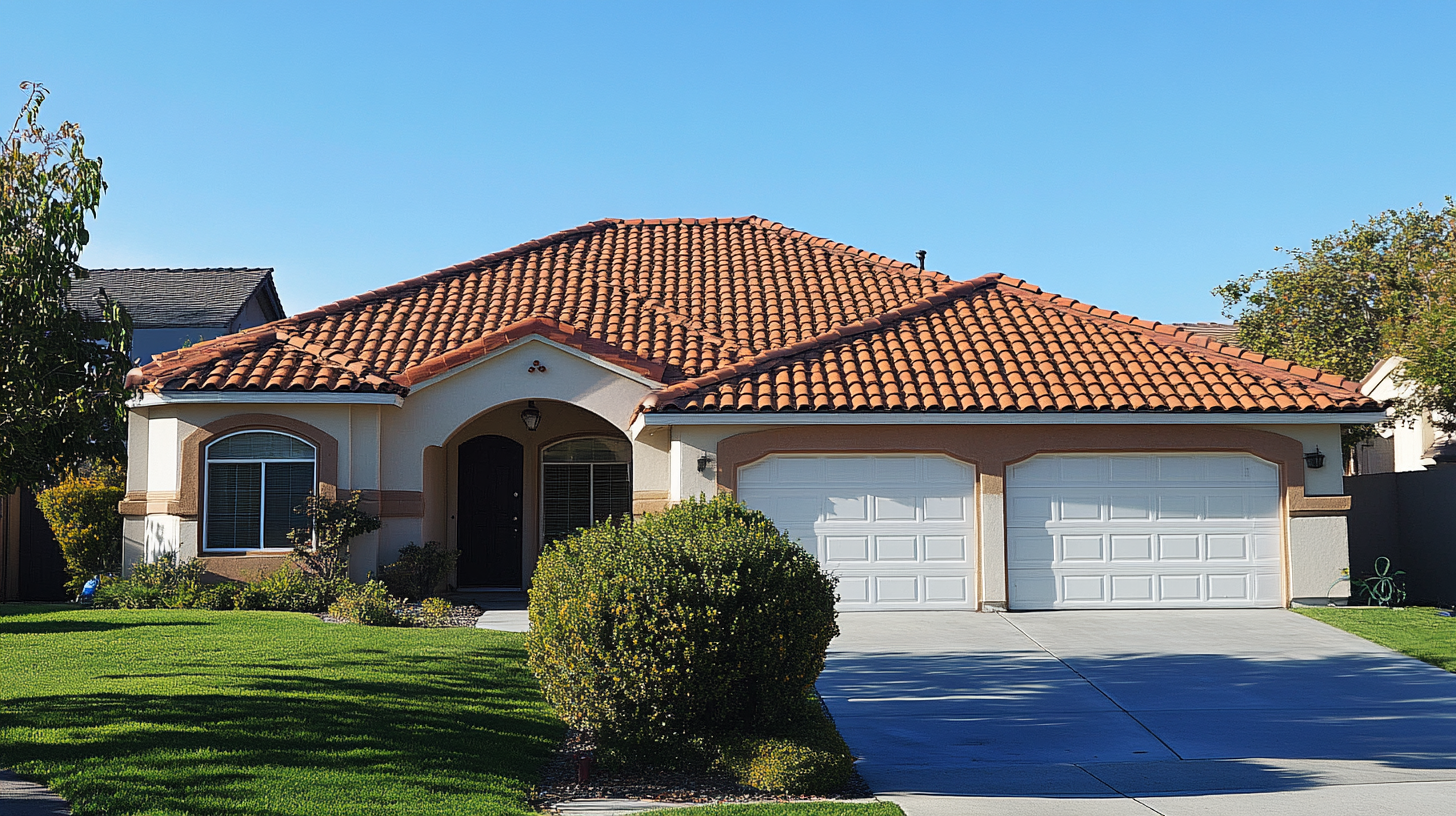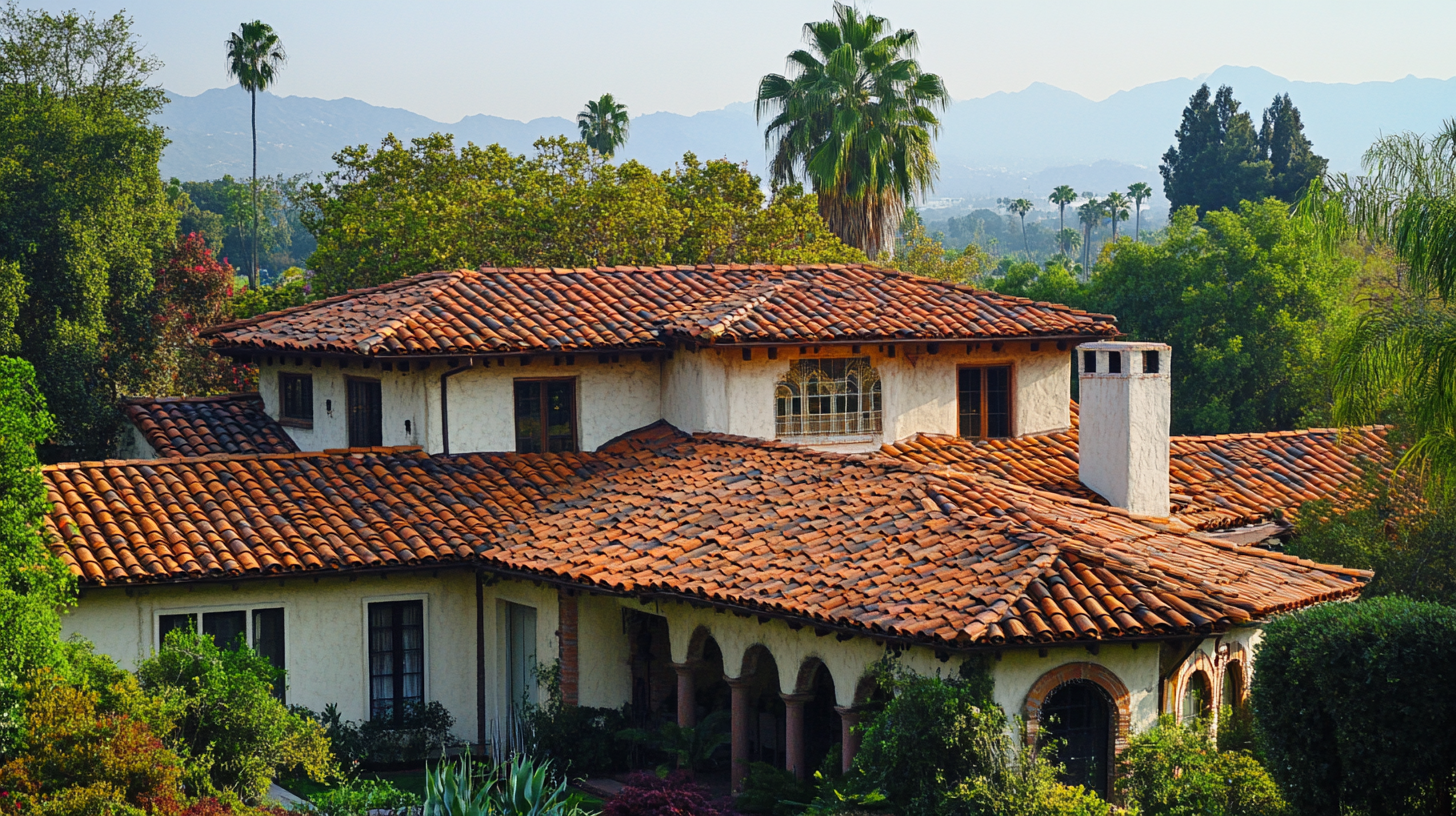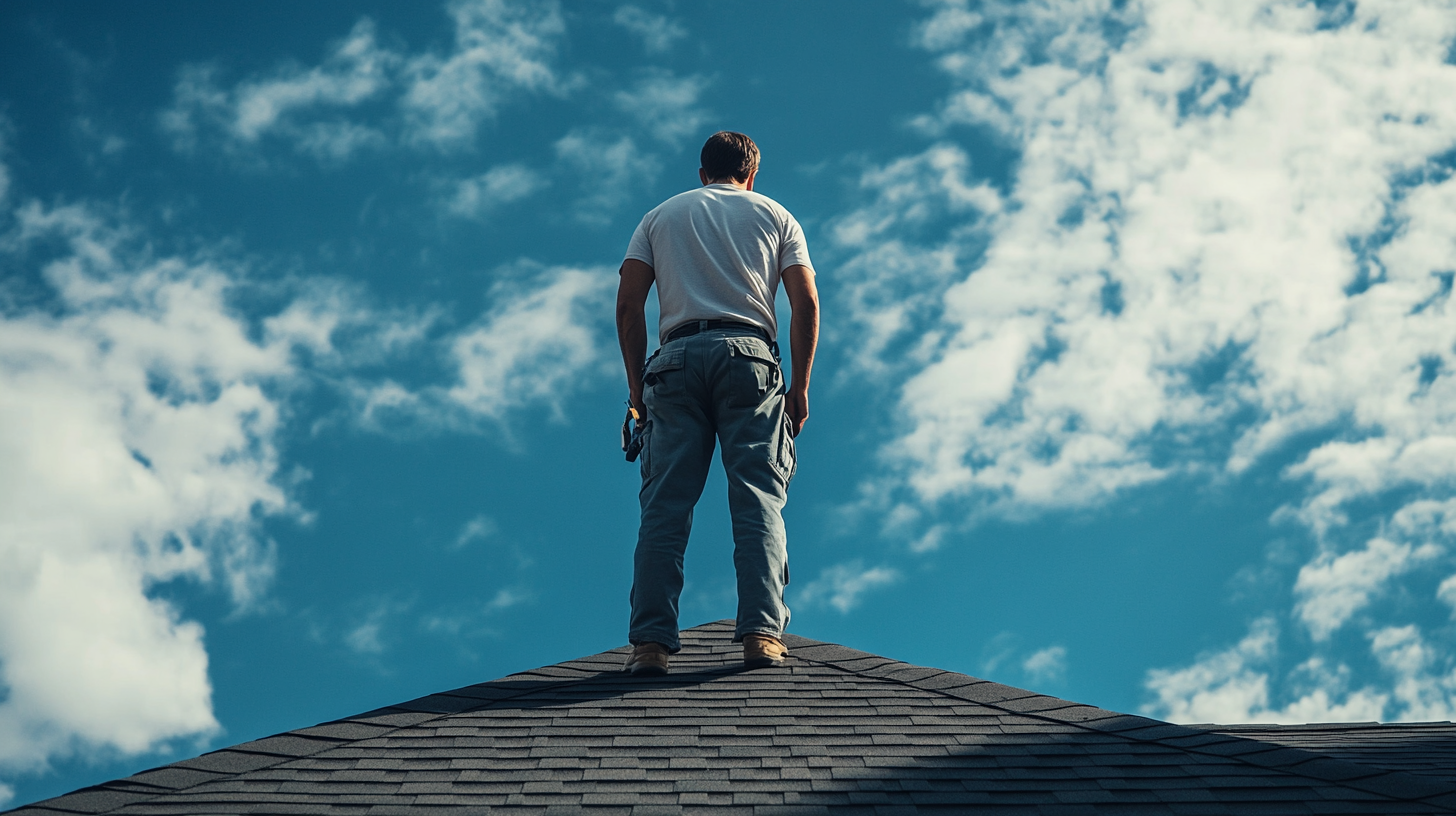Roof Repair vs. Replacement: How to Know Which One You Need
8.1 Min Read
Before deciding on roof repair or replacement, it’s crucial to assess the extent of the damage. Some signs are more obvious, like missing shingles or visible leaks, while others might require a closer inspection. Performing a thorough evaluation of your roof’s condition can help you avoid unnecessary costs and ensure that any issues are addressed promptly.
Signs You Might Need a Repair
- Missing or Damaged Shingles: If only a few shingles are missing or damaged, a repair might be all you need. Replacing these shingles can restore your roof’s integrity without much hassle. It’s a relatively simple fix that can prevent further damage from occurring, such as water infiltration or structural weakening. Timely shingle replacement is crucial in maintaining the overall health of your roof and prolonging its lifespan.
- Minor Leaks: Small leaks, particularly those around roof penetrations like chimneys and vents, can often be fixed without replacing the entire roof. These leaks, if caught early, can be resolved with minimal expense and effort. Addressing leaks promptly can prevent more severe water damage inside your home, including mold growth and structural deterioration. Regular inspections can help detect leaks early, allowing for quick repairs.
- Localized Damage: Damage confined to a small area of the roof can usually be repaired without affecting the rest of the structure. This type of damage might result from fallen branches or localized weather impact. Repairing localized damage can be a cost-effective way to maintain the roof’s overall condition and protect your home. It’s essential to ensure that the repair is conducted properly to prevent recurrence.
Indicators of a Replacement
- Widespread Damage: If damage is extensive, covering a large portion of the roof, replacement might be more cost-effective in the long run. Extensive damage can compromise the roof’s structural integrity and lead to frequent repairs if not addressed. A full replacement ensures that all underlying issues are resolved, providing a fresh start and reducing the likelihood of future problems. Additionally, a new roof can enhance the aesthetic appeal of your home.
- Age of the Roof: Most roofs have a lifespan of 20 to 25 years. If your roof is approaching this age, replacement could be a better investment than constant repairs. Older roofs are more susceptible to weather damage and may no longer offer adequate protection. Investing in a new roof can also improve energy efficiency, potentially lowering heating and cooling costs.
- Structural Issues: If the roof deck is compromised, a replacement is often necessary to ensure safety and effectiveness. Structural issues can pose significant risks, including potential collapse or severe water damage. A replacement allows for a thorough examination and reinforcement of the roof deck, ensuring long-term stability. It’s crucial to address these issues promptly to maintain the safety and security of your home.

Cost Considerations
Understanding the costs associated with both options can also influence your decision. Budget constraints, the urgency of the repair, and the potential return on investment should all be considered. Let’s break down the factors affecting roof repair and replacement costs.
Repair Costs
Roof repair costs can vary widely depending on the damage’s extent and the materials needed. On average, homeowners might spend a few hundred to a couple of thousand dollars for repairs. Minor fixes are typically more affordable and can extend your roof’s life without breaking the bank. It’s important to obtain multiple quotes from reputable contractors to ensure you’re getting a fair price for the repair work.
Additionally, the type of roofing material impacts repair costs. Asphalt shingles, for example, are generally less expensive to repair than metal or tile roofing. Labor costs also vary based on the complexity of the repair and the contractor’s expertise. It’s essential to consider the cost-benefit ratio of repairs, ensuring that the expense is justified by the longevity and effectiveness of the fix.
Replacement Costs
Roof replacement is a more significant investment. The cost depends on the size of your roof, the materials you choose, and the complexity of the installation. Generally, a full replacement can cost anywhere from $5,000 to $15,000 or more. However, a new roof can increase your home’s value and provide peace of mind. Financing options or home improvement loans can make the investment more manageable.
The choice of roofing material significantly impacts replacement costs. While asphalt shingles are cost-effective, metal and tile options, though more expensive, offer greater durability and energy efficiency. Consider the long-term savings and potential increase in home value when evaluating replacement costs. It’s also wise to factor in potential savings on energy bills, as newer roofing materials may offer better insulation.
Comparing Roofing Solutions
When considering repair vs. replacement, it’s essential to evaluate the available roofing solutions and materials that best suit your needs and budget. Each material offers unique benefits and drawbacks, impacting the overall effectiveness and cost-efficiency of your roofing solution.
Material Options
- Asphalt Shingles: Popular due to their affordability and ease of installation. They are suitable for both repairs and replacements. Asphalt shingles offer a variety of styles and colors, allowing homeowners to customize the look of their roofs. Their flexibility makes them a preferred choice for many residential roofing projects.
- Metal Roofing: Known for durability and longevity, metal roofing can be a worthwhile investment, particularly for replacements. Metal roofs are resistant to extreme weather conditions and can last up to 50 years or more with proper maintenance. Their reflective properties also make them energy-efficient, potentially lowering cooling costs in warmer climates.
- Tile Roofing: Offers a unique aesthetic and long-lasting protection but tends to be more expensive and might require specialized repair techniques. Tile roofs are fire-resistant and can withstand harsh weather, making them a durable choice. However, their weight may require additional structural support, increasing installation complexity and cost.
Environmental Impact
Consider the environmental impact of your roofing decision. Repairing rather than replacing can reduce waste, but if replacement is necessary, opting for recyclable materials or energy-efficient options can help minimize your ecological footprint. Sustainable roofing options not only benefit the environment but can also offer long-term energy savings.
For those focused on sustainability, consider materials like metal or green roofing solutions that provide natural insulation and reduce energy consumption. Additionally, recycling old roofing materials can further lessen environmental impact. Evaluating the life cycle of roofing materials can guide eco-conscious homeowners in making informed decisions.

Making the Right Decision
Choosing between roof repair and replacement involves weighing the damage, costs, and benefits associated with each option. Careful consideration of these factors ensures that you make a decision that aligns with your immediate needs and long-term goals. Here are some guidelines to help you make the right choice:
When to Choose Repair
- The damage is minor and confined to a small area. Addressing minor issues promptly can prevent them from escalating into more significant problems. Repairs are often quicker and less disruptive than replacements, making them ideal for urgent fixes.
- The roof is relatively new and in good overall condition. If your roof has many years of service left, repairs can extend its lifespan without necessitating a full replacement. Regular maintenance and repairs can enhance the roof’s durability and performance.
- You need a quick, temporary fix before a more extensive renovation. Repairs can serve as a stopgap solution, allowing you time to plan and budget for a future replacement. This approach can be practical for homeowners considering major home renovations in the near future.
When to Opt for Replacement
- The roof shows signs of significant wear and tear. Extensive wear can compromise the roof’s ability to protect your home, making replacement a safer, more effective option. A new roof can enhance your home’s curb appeal and improve its structural integrity.
- You have experienced recurring issues despite multiple repairs. Persistent problems indicate underlying issues that repairs alone cannot resolve, warranting a complete replacement. A replacement provides an opportunity to upgrade to more durable materials.
- You want to upgrade to a more durable or aesthetically pleasing material. Replacements allow you to enhance your home’s appearance and potentially increase its market value. Consider modern materials that offer improved energy efficiency and longevity.
Seeking Professional Advice
Regardless of whether you lean towards repair or replacement, consulting with a professional roofer can provide valuable insights. They can perform a thorough inspection, offer estimates, and recommend the best course of action based on your roof’s condition and your budget. Professional guidance ensures that your decision is informed and tailored to your specific circumstances.
A roofer’s expertise can identify hidden issues that may not be apparent to the untrained eye, preventing future complications. Additionally, they can advise on the most suitable materials and techniques for your roof’s particular needs. Engaging a professional ensures that any work performed is of high quality, safeguarding your investment.
Final Thoughts
Deciding between roof repair and replacement is a significant decision for any homeowner. By carefully assessing the damage, understanding the costs involved, and considering the long-term benefits, you can make an informed choice that ensures your home’s protection and enhances its value. Remember, maintaining your roof is an investment in your home’s future. Regular maintenance and timely decision-making can prevent costly repairs and prolong your roof’s lifespan, ultimately contributing to the overall health and value of your home.
Contact Frontline Roofing for Expert Assistance
If you’re facing roof issues and need professional guidance on whether to repair or replace, don’t hesitate to reach out to Frontline Roofing. Our experienced team is ready to provide a thorough inspection, detailed estimates, and tailored recommendations to ensure your roof’s longevity and your home’s safety.
Contact us today to schedule your consultation and take the first step towards a secure and beautiful roof!
continue reading
Related Posts
When it’s time to repair or replace your roof, one
When it comes to commercial and industrial roofing in California,
Your roof is your home’s first line of defense against






